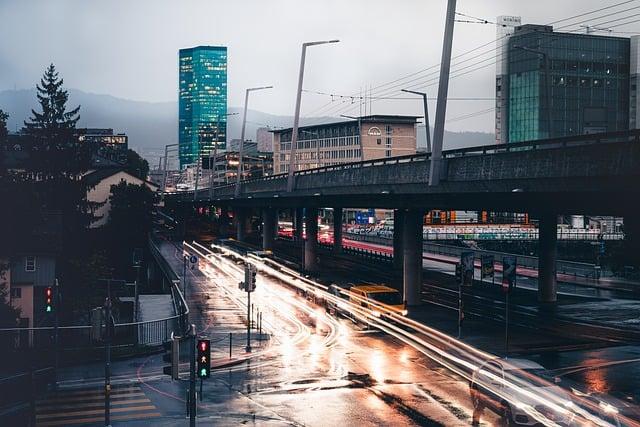In a country where sprawling urban landscapes meet the rugged beauty of nature, Pakistan stands at a pivotal crossroads in its quest for progress. With a burgeoning population and an economy yearning for revitalization, the need to revamp infrastructure is not just a necessity; it is a crucial linchpin for sustainable development. From antiquated roads that can barely contain the flow of modern traffic to power grids strained beyond their capacity, the challenges are numerous and complex. Yet, amidst these hurdles lies a realm of innovation and ingenuity, as engineers, policymakers, and communities come together to envision a future that embraces both tradition and technology. This article delves into the multifaceted landscape of Pakistan’s infrastructure revamp—exploring the challenges that hinder progress, while also shining a light on the innovative solutions that offer a glimmer of hope in this transformative journey.
Transforming Urban Landscapes: Addressing the Urban-Rural Divide
In the quest to enhance urban living while reducing the urban-rural divide, innovative urban design is critical. Cities in Pakistan are currently grappling with overcrowding, inadequate public services, and unsafe living conditions. By embracing sustainable architectural practices, cities can transform into hubs of inclusivity and resilience. Key strategies include:
- Smart Infrastructure: Leveraging technology for efficient public transportation, energy management, and waste disposal systems.
- Green Spaces: Integrating parks and community gardens into urban planning to improve air quality and promote mental well-being.
- Mixed-Use Developments: Creating neighborhoods that combine residential, commercial, and recreational spaces to minimize travel needs and foster community interaction.
Simultaneously, empowering rural areas to reduce migration to urban centers is crucial. Investment in rural infrastructure can create viable living conditions that attract individuals to stay. This requires:
| Initiatives | Benefits |
|---|---|
| Improving Transportation Networks | Easier access to markets and services |
| Developing Local Industries | Job creation and economic stability |
| Enhancing Educational Facilities | Empowering youth with skills for sustainable livelihoods |

Sustainable Solutions: Green Technology in Infrastructure Development
As the world pivots towards environmental conservation, Pakistan has the opportunity to incorporate green technology into its infrastructure development. Embracing renewable energy sources such as solar, wind, and hydroelectric power not only aids in reducing carbon emissions but also enhances energy security. Moreover, using sustainable materials in construction can significantly lower the ecological footprint. Innovations such as recycled aggregates and low-impact foundations contribute to wiser resource utilization, thereby minimizing waste and advocating for a circular economy.
To further bolster these efforts, collaboration among government, private sector, and communities is essential. Strategies for integrating sustainable practices include:
- Investment in smart grid technology to optimize energy distribution
- Implementing green roofs and vertical gardens to improve urban air quality
- Utilizing rainwater harvesting systems in urban planning
Furthermore, education and awareness campaigns will be pivotal in fostering a culture of sustainability within the populace. Achieving a balance between infrastructural development and ecological integrity requires not only innovation but also a commitment to long-term sustainability goals.

Public-Private Partnerships: Bridging Financial Gaps and Driving Innovation
In the quest to revamp Pakistan’s infrastructure, public-private partnerships (PPPs) have emerged as a pivotal mechanism to address financial deficiencies and foster innovation. These collaborations allow the government to leverage private sector efficiency and capital, streamlining the execution of large-scale projects. Furthermore, they offer a platform for local firms to gain exposure and experience, which is critical in a rapidly evolving economy. By engaging in such partnerships, stakeholders can experience a multitude of benefits, including:
- Shared Risk: Distributing the financial burden between public and private entities reduces the strain on government budgets.
- Access to Expertise: Private companies often bring in specialized knowledge and advanced technologies, driving project efficiency.
- Sustainability Focus: Many private partners are increasingly committed to sustainable practices, which align with global aims for environmental conservation.
Moreover, successful PPPs can lead to targeted Innovation through collaborative research and development. By fostering an ecosystem that incentivizes technological advances, these partnerships can greatly enhance the infrastructure landscape. For instance, infrastructure projects can significantly benefit from the incorporation of smart technologies in areas such as transportation and energy management. The following table summarizes some innovative areas where PPPs can have an impact:
| Domain | Potential Innovation |
|---|---|
| Transportation | Smart Traffic Management Systems |
| Energy | Renewable Energy Integration |
| Water Management | Advanced Irrigation Solutions |
| Urban Development | Green Building Technologies |

Regulatory Reforms: Streamlining Processes for Efficient Project Implementation
In the face of ongoing infrastructural challenges, regulatory reforms stand as a pivotal strategy for enhancing the efficiency of project implementation. By revisiting and revising policies that envelop the infrastructure sector, Pakistan can lay the groundwork for a more conducive environment that nurtures innovation and expedites progress. Key measures that could be undertaken include:
- Simplifying Approval Processes: Streamlining the various bureaucratic layers can significantly reduce delays, allowing projects to transition from the planning stages to actual execution swiftly.
- Enhancing Transparency: Implementing transparent procedures can not only build public trust but also improve accountability, ensuring that projects are monitored effectively throughout their lifecycle.
- Facilitating Public-Private Partnerships: Encouraging collaborations between government entities and private investors can spur innovation, infuse capital, and leverage expertise in project execution.
Furthermore, the adoption of digital platforms for project monitoring and regulatory compliance can prove invaluable. By employing technology to track project milestones and share information among stakeholders, transparency and efficiency can be markedly improved. An example of potential outcomes through digital integration could include:
| Aspect | Traditional Method | Digital Method |
|---|---|---|
| Document Approval Time | Weeks | Days |
| Stakeholder Communication | Emails/Meetings | Real-time Updates |
| Compliance Tracking | Manual | Automated Alerts |
By embracing such innovative approaches, Pakistan can reclaim lost time in infrastructure development and construct a robust foundation for sustainable growth.
Closing Remarks
As we draw the curtain on our exploration of Pakistan’s ambitious journey to revamp its infrastructure, it becomes clear that the road ahead is both challenging and promising. The intricate dance of innovation and adversity sets the stage for a transformative era, where visionary projects and sustainable practices can not only uplift the nation but also inspire a global narrative of resilience and modernization.
While obstacles such as bureaucracy, funding, and environmental concerns may loom large, they also present opportunities for creative solutions and collaborative efforts that can unite stakeholders from every walk of life. Pakistan stands at a crossroads, where the convergence of technology, public policy, and community engagement could catalyze a renaissance that reshapes not just cities and transportation, but the very fabric of society itself.
In the stories of progress and perseverance, we find hope—a reminder that the backbone of any thriving nation lies in its infrastructure. As we move forward, let us remain engaged and attentive, celebrating innovations that pave the way for a brighter, more connected Pakistan. The journey may be long, but with vision and determination guiding each step, the destination holds the promise of a flourishing future for generations to come.



